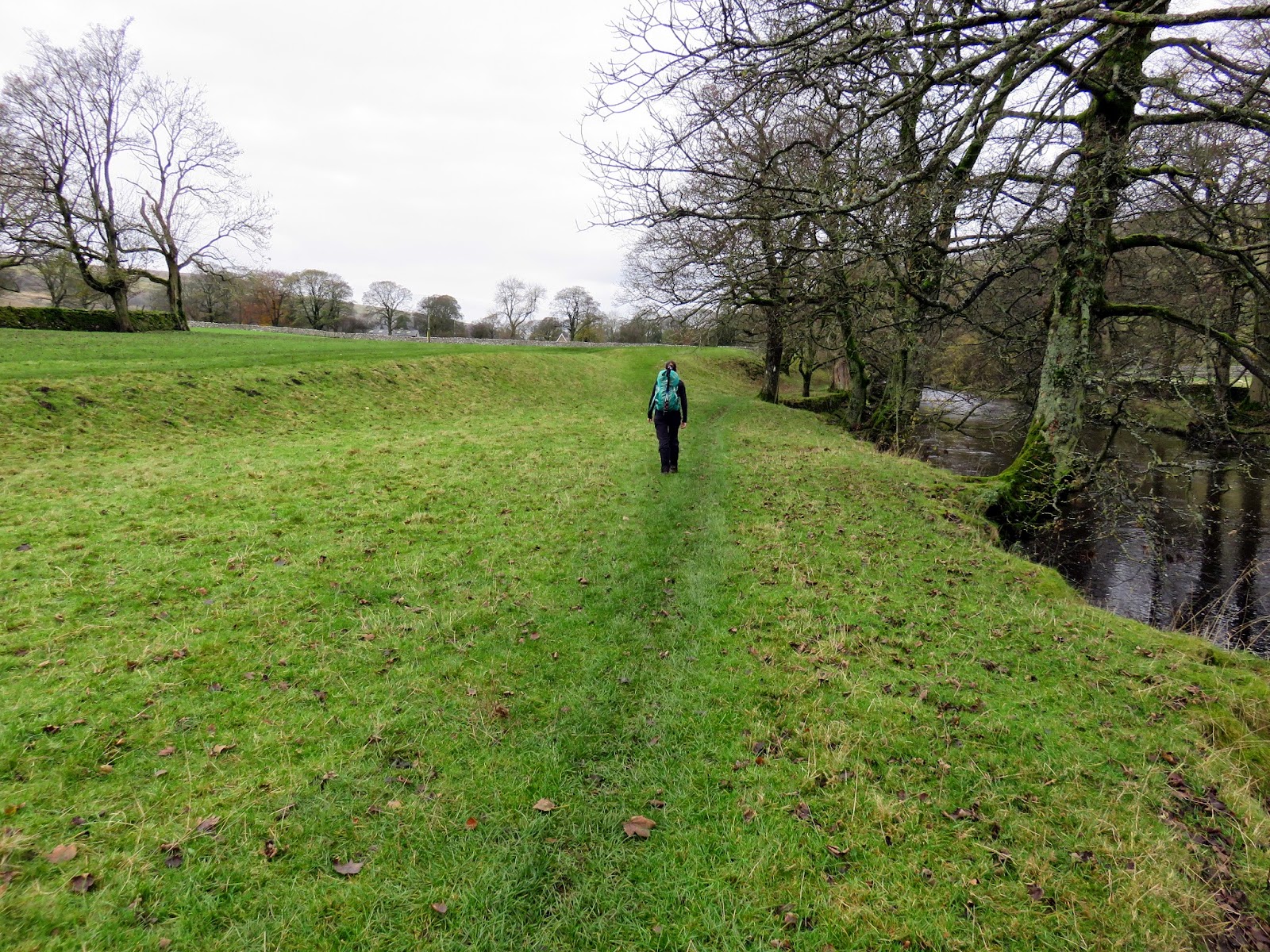This map was created using GPS Visualizer's do-it-yourself geographic utilities.
Please wait while the map data loads...
Date: 16/11/2014
From: Sleets Gill Bridge
Parking: Small layby on Sleets Gill Beck crossing
Start Point: Sleets Gill Bridge or Arncliffe
Region: Southern Yorkshire Dales
Route length: 10.0 miles (16 km)
Time taken: 04:20
Average speed: 2.3 mph
Ascent: 582m
Descent: 599m
Summits: Parson's Pulpit (538m), Proctor High Mark (531m)
Other points of interest: Yew Cogar Scar, Dowkabottom, Dowkabottom Cave, Sleets Gill Cave
We were back in the Yorkshire Dales this weekend, scratching an itch that's long been nagging at my attention. Malham Cove is an obvious and impressive, much-visited landmark and rightly so. It marks the beginning of a large upland limestone plateau that, despite its size, has little in the way of paths or traditional access for a walker. The area in question is Hawkswick Clowder (into which I have included an area called Clowder and the imaginatively titled, Height).
Planning a walk around this area can be a bit of a challenge given the number of walls and disused shafts that are marked on the map, combined with the lack of paths or even obvious rights of way. However, after a read through some other posts where people had undertaken similar outings, the walk seemed a lot more straightforward than it may have been.
After much debate (and to Sara's concern), we left the car in a small layby at a crossing of Sleets Gill Beck, deciding that we'd rather complete the long stroll to Arncliffe first and finish off coming down the hillside to the car. There's probably just enough room for two cars, almost entirely off the road.
 |
| Heading into the heart of Littondale |
 |
| The remains of Scar Gill Barn |
 |
| Hawkswick Bridge |
 |
| The exposed limestone of Blue Scar |
 |
| Erosion on the banks of the River Skirfare |
 |
| River Skirfare at Holme Barn |
 |
| Approaching Arncliffe |
The riverside path sticks diligently to the riverbank, only leaving it once you reach Arncliffe. After passing around the side of The Falcon Inn, we joined the walled lane that leads to the Monk's Road, a path that links Arncliffe to Malham and eventually Airedale. The path was supposedly used by the monks to access large areas of land they owned in the Dales, stretching as far as the Lake District.
 |
| St. Oswald's Church in Arncliffe |
 |
| The entrance to Yew Cogar Scar |
 |
| The Monk's Road - Sara correctly identifying the route |
 |
| The route heads off up the hillside |
 |
| Littondale backed by Out Moor |
 |
| Yew Cogar Scar with Cowside Beck |
 |
| The Monk's Road heads up over the moor |
 |
| A look back down the wall we were following |
 |
| Some of the limestone starts to poke through as we climb higher |
 |
| Great Whernside in the distance |
 |
| Pendle Hill |
 |
| Sara makes her way up Parson's Pulpit |
 |
| The survey bolt on Parson's Pulpit |
 |
| A close up of the bolt |
 |
| An interesting feature, an old river channel perhaps? |
 |
| More limestone pavement at High Lineseed Head |
 |
| We had to cross the point where the two walls meet |
 |
| A view into Low Lineseed Head |
 |
| Limestone pavement at High Mark |
 |
| High Lineseed Head |
 |
| The sprawling Great Whernside |
 |
| The cairn atop Proctor High Mark |
 |
| The view south-west |
 |
| The large cairn close to the summit |
 |
| A close up of the structure |
 |
| The view south-east |
 |
| Buckden Pike |
 |
| The nose of Great Whernside |
 |
| A long stroll following the wall |
 |
| Sara heads to Dowkabottom |
 |
| Dowkabottom |
 |
| One of the enclosure remains |
 |
| The same structure from the other angle |
 |
| The huge bowl of Dowkabottom |
 |
| Remains of the circle hut and the cave entrance |
 |
| The cairns of Dowkabottom |
 |
| They sit on a limestone platform |
 |
| The platform forms a natural shelter |
 |
| The largest of the cairns |
 |
| Monochrome panorama |
 |
| Old Cote Moor and Littondale |
 |
| Me among the cairns! |
 |
| Sara peers into Dowkabottom cave |
 |
| Access is down an easy ramp |
 |
| Flowstone in the ceiling of the chamber |
 |
| Sara in the cave |
 |
| The etchings on the wall |
 |
| A look down the corridor |
 |
| Classic limestone formations |
 |
| The sun was on its way down by the time we resurfaced |
 |
| Sleets Gill Cave |
 |
| Sleets Gill Cave |
 |
| Sleets Gill |

Such beautiful and unusual landscapes that pop out of nowhere. I liked your picture amongst the cairns, giving an idea of size/scale. It is a real hidden gem, thanks for sharing.
ReplyDelete